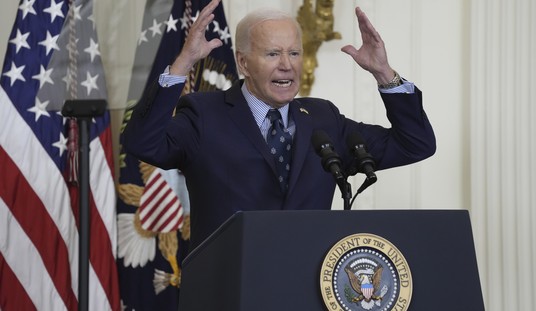CAMDEN, S.C. -- While the political class was focused on the meaning of pigs wearing lipstick, a few fortunate South Carolinians were riveted by the meaning of valor.
The occasion was a celebration of four of the state's living recipients of the Medal of Honor -- Charles Murray Jr., (Army, WWII, 1944), John Baker (Army, Vietnam, 1966), James Livingston (USMC, Vietnam, 1968) and Michael Thornton (Navy, Vietnam, 1972).
The four appeared in Camden (at an event my husband helped organize) to raise awareness and funding for the Congressional Medal of Honor Museum in Charleston, S.C., and for the Medal of Honor conventions to be held in Chicago in 2009 and Charleston in 2010.
To hear their stories, as recounted by Vice Admiral Edwin R. "Rudy" Kohn, Camden resident and retired deputy commander of the Pacific Fleet, against the backdrop of today's political noise was to be reminded of how rare personal courage really is.
And how silly we sometimes are.
Each man's story can be found in a coffee table volume, "Medal of Honor," but here is just one snapshot of one man's experience and what it takes to be recognized for this award.
Flashback to Vietnam the fall of 1972.
By Oct. 31, U.S. involvement in Southeast Asia was nearly finished. Three officers and nine enlisted Navy SEALS were left to rescue downed American airmen and conduct "sneak and peek" reconnaissance on the North Vietnamese Army's advance southward.
Petty Officer Michael Thornton, then just 23, was part of a patrol that included three South Vietnamese SEALS and his commanding officer, Lt. Tom Norris. During what was to become their final patrol, the five men swam from a small boat about a mile offshore to reach land. They quickly realized they had overshot their target destination and were in North Vietnam when they came under heavy fire. More than 50 enemy soldiers closed to within five yards of the men in a firefight that last five hours.
Recommended
Norris ordered two of the Vietnamese SEALS and Thornton, who had been wounded in the back, to fall back to a sand dune and provide cover. Soon after, the third Vietnamese SEAL who had remained with Norris reached the dune to report that the lieutenant was dead.
What does one do when the bullets are still flying and your commanding officer has been killed? If you're Mike Thornton, you head straight into those bullets and get your man. Thornton ran through 500 yards of open terrain, killed two enemy soldiers who were standing over Norris' body, lifted Norris -- his skull shattered and barely alive -- and ran back toward the beach.
Both men were blown into the air by incoming fire from the USS Newport News. Again, Thornton lifted Norris from the ground and ran another 300 yards to the open sea. Once in the water, he lashed his life vest to Norris, and then grabbed one of the other SEALS, who had been wounded in the hip and couldn't swim. Buoying his two wounded comrades, Thornton swam for more than two hours before the three were rescued by the same junk that had dropped them off 16 hours earlier.
That wasn't the last time Thornton rescued his officer. On Oct. 15, 1973, Lt. Thornton was on his way to receive his Medal of Honor from President Richard Nixon. Under doctor's orders, Norris, who was still recovering at Bethesda Naval Hospital, wasn't allowed to attend the ceremony. That didn't sit well with Thornton, who dropped by the hospital and helped Norris out a back door.
Three years later, Norris received his own Medal of Honor for an earlier mission during which he rescued two downed airmen from North Vietnam.
It is hard to know what makes a man charge off into the maw of near-certain death to save another. But hearing these heroes speak and reading their stories, two common characteristics stand out -- humility and modesty. As Thornton remarked during Tuesday night's ceremony, honor belongs not to men like him who attend receptions and enjoy the hugs of children and grandchildren, but to the more than a million Americans who have paid the ultimate price.
At a time when Americans bemoan the lack of positive role models, there are at least 103 real heroes living discreet lives in quiet neighborhoods across this nation.
We have no paucity of role models. What we have is a failure to notice them.
(If you would like to make a tax deductible donation (tax I.D. number 52-6056376) to the Congressional Medal of Honor Society, send your donation to: Congressional Medal of Honor Society/ 40 Patriots Point Road/ Mt. Pleasant, South Carolina 29464)

























Join the conversation as a VIP Member